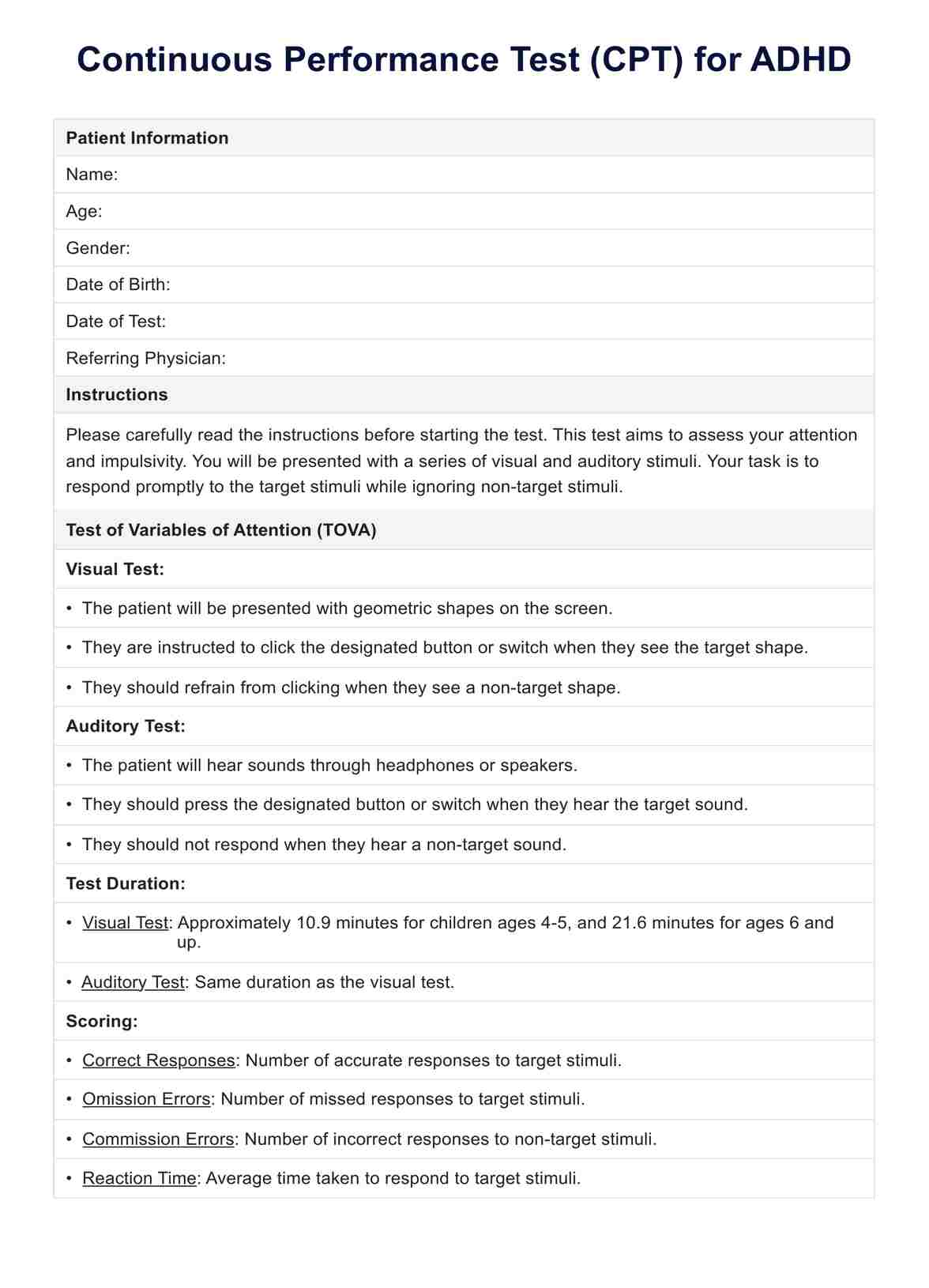The CPT ADHD test is typically suitable for individuals aged six years and older, including children, adolescents, and adults.

CPT Test for ADHD
Learn about the CPT Test for ADHD, a vital tool for assessing attention deficit hyperactivity disorder efficiently and accurately.
CPT Test for ADHD Template
Commonly asked questions
The accuracy of the CPT test in diagnosing ADHD depends on various factors, including the test's sensitivity and specificity, the individual's adherence to test instructions, and the interpretation by a qualified healthcare professional.
Individuals experiencing symptoms such as inattention, hyperactivity, and impulsivity may be qualified for an ADHD test. It is recommended to consult with a qualified healthcare professional, such as a psychologist or psychiatrist, for an accurate assessment and diagnosis.
EHR and practice management software
Get started for free
*No credit card required
Free
$0/usd
Unlimited clients
Telehealth
1GB of storage
Client portal text
Automated billing and online payments











